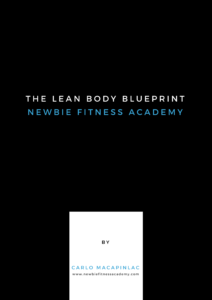The OMAD Diet Plan.
Is it the most powerful intermittent fasting schedule? What are the pro’s and con’s of just eating one meal a day?
I’m going to break it all down in this video.
The OMAD Diet Plan – Explained
On paper, eating one meal a day is the strongest and quite possibly the most effective way to tap into the benefits of weight loss and the human growth hormone increase (HGH) increase.
Some experts claim it to be the real fountain of youth (HGH has been found to be as high as 2,000% from the baseline after a 24 hour fast).
The OMAD diet plan also gets you to tap into autophagy, a detox on a cellular level, where your body destroys old and worn out cells and replaces it with new ones. You also get increased energy and mental clarity.
Eating one meal a day is as long as you can go all day without eating. Unless you want to get into doing an extended fast like 36, 48, 72 hours, all the way up to 7 day fasts.
But I’m all about the minimum effective dose.
From a practical standpoint, going past 24 hours without eating will definitely start to get in the way of your social life.
Also, a 48 hour fast on a consistent basis isn’t preferable because the benefits start to taper off after a while.
There is an increase limit where the benefits I just mentioned, the growth hormone for example, start to taper off and drop.
You don’t want to go past that threshold where you start getting diminishing returns and you’re not getting the benefits as effectively as possible.
Having said that, studies show that a yearly 7 day water fast is unbelievably powerful when it comes to cancer prevention. Again, this most likely has to do with autophagy. It only gets activated when you’re fasting.
When you do a 7 day fast, you’re basically giving your body a full 7 days to clean out all the gunk on a cellular level in your system. And this could include potential cancer cells.
It’s important to know this because according to data from 2017, cancer, next to cardiovascular disease, is the second leading cause of death in the US. That’s where the benefits of fasting goes way beyond weight loss.
We want to find that fine line between getting all those amazing benefits and not being too disruptive when it comes to your lifestyle.
Because at the end of the day, the number one thing that determines your success with any weight loss protocol, and this includes intermittent fasting, is adherence.
How well can you follow your chosen intermittent fasting schedule and can you follow it long term?
The OMAD Diet Plan – Why It Works
The key thing about the OMAD diet plan is it’s the ultimate food restriction per 24 hours.
You literally can’t go any longer than just eating one meal a day. Which makes the OMAD diet plan possibly the most powerful intermittent fasting schedule.
Why? Because for 23 out of the 24 hours of the day, you are in fat burning mode.
It also makes the cut in terms of you still being able to incorporate it into your schedule. Albeit in a somewhat limited way because you have to be strategic in terms of when you’re eating that one meal.
For a lot of people, that’s usually around dinner time. But that’s not set in stone.
For example, if it’s easier for you to eat your one meal during lunch time, that’s fine. And I’m going to give you some tips how to best incorporate this into your schedule. Practicality also plays a key role in your success.
The OMAD diet plan shines the brightest especially in terms of fat loss compared to other intermittent fasting schedules because it literally says in the name itself. Eat one meal a day. That’s it.
It’s not about eating less, but less frequently. Eating one meal a day definitely takes that statement to its absolute limit.
Back then, I started out just doing a 16 hour fast. That’s how I initially achieved my transformation. I was very happy with it. It changed my life.
I did that for a few years. Here’s how I looked at my maintenance weight.
I’m definitely not embarrassed to take my shirt off in public.
But I felt like I could do more. This was also the time where I was trying to figure out what the optimal diet was to pair intermittent fasting with.
Because what you eat and when you eat are equally as important in terms of fat loss.
Again, I did a 16 hour fast for a few years. Which means that my body is used to it. I’m metabolically flexible and I’m also fat adapted.
What that means is that my body is easily able to tap into my fat stores during my fast and burn it for energy.
I want you to remember that. We’re going to come back to it.
Think of fasting like a muscle. The more you do it, the more you workout a muscle, the stronger it gets. The longer you fast, the easier it gets.
Eventually, I graduated myself from a 16 hour fast to a 20 hour fast which is also called the Warrior diet. From there, I transitioned to just eating once a day.
It definitely took a few days of adjusting but eventually my body adapted to it. And now here’s how I look.
Notice the difference? Again, it’s not like I was unhappy with my body to begin with. I just wanted to see how far I could push the proverbial envelope.
How To Do The OMAD Diet Plan Properly
Now, how does this actually work in terms of real life?
For me, the OMAD diet plan is my regular scheduled fast. I eat my one meal during dinner time.
During the day, I drink two cups of coffee in the morning with a splash of heavy cream. I workout at noon.
So if you have a 9-5 job and you do OMAD, maybe see if you can negotiate working through your lunch break because you’re not eating.
If not, you can go for a walk. Or you can workout during that time instead. You get bonus points when you train in a fasted state because you’re mainly burning fat for energy.
The key is to stay busy throughout the day.
But sometimes, life happens. Sometimes I have a family lunch. If that’s the case, I’ll just do a 16 hour fast that day. Sometimes I have to eat earlier than normal if I have a date. That’s fine as well.
I’m a big proponent of the 90/10 rule. 90% of the time, I eat one meal a day.
That one meal consists of mostly unprocessed, single ingredient, nutrient dense foods. The other 10%? I’ll eat carrot cake if I feel like it. I love carrot cake.
That’s another great thing about the OMAD diet plan. It gives you a lot of flexibility.
I mean, don’t abuse it obviously. I still keep my cheat meals to just once a week because I enjoy what I normally eat during the week. But I’ve found the OMAD diet plan to be the most powerful intermittent fasting schedule to get away with a cheat meal.
The other thing that is worth mentioning is the added energy and laser like focus that it’s given me. This is something that a lot of people who do OMAD mention as well.
When I did a 16 hour fast and I broke my fast at 1pm, I would always feel like I needed a nap after my meal. When I switched to eating one meal a day, I rarely feel the need to nap these days.
I also feel extra focused throughout the day. This mostly likely has to do with the natural survival instinct that gets triggered when you put your body in a fasted state.
This directly flies in the face of the anti-fasting crowd who claims that fasting will somehow slow down your metabolism, or that it puts you into starvation mode.
No. It’s the complete opposite.
Fasting actually increases your metabolism because one of its benefits it improves insulin sensitivity. Which then gives you access to tap into your almost unlimited supply of fat stores and burn it for energy.
So how could that put you into starvation mode? That almost sounds silly.
Do you know what actually lowers your metabolism and puts you into starvation mode ? A calorie restriction diet.
Think about it this way. Think about the last time you had a huge meal (ie. your last thanksgiving dinner).
How did you feel afterwards? Were you alert and focused? No. It’s the complete opposite. You’re basically in a food coma. You just wanted to lie down and watch football.
When you fast, your focus and energy goes up. This is a survival mechanism through evolution.
Because when we’re hunting and we haven’t eaten all day, if our metabolism slowed down and we had no energy, we wouldn’t have been able to hunt. That would’ve been the end of our species.
The OMAD diet plan gives you that nice little bonus of increased energy and mental clarity.
Can You Build Muscle Following The OMAD Diet Plan?
If you’re worried about not being able to build muscle because you want to be big and strong. You don’t even have to take me as an example even though I’m a national level weightlifter who eats just one meal a day.
You can take it from an elite athlete instead. If you’re from North America who watches football then look no further than Herschel Walker.
Guess how long he’s been eating one meal a day? 20 days? 20 months? Nope. Over 20 years.
He played pro football and transitioned to MMA fighting while eating one meal a day. Not to mention, he looks like an action figure. So that immediately disproves the argument that you can’t get all your nutrients in one meal.
Simply put, eating one meal a day, especially if your goal is fat loss, and building muscle, is one of the most powerful tools you can use.
As mentioned earlier, the 16 hour fast is the minimum effective dose. I recommend it to all beginners so they can get started with intermittent fasting.
Just skip breakfast. There’s no science behind eating first thing in the morning. That’s a myth.
Would I recommend eating one meal a day right away? Absolutely not.
There are levels to this. You need to be fat adapted and metabolically flexible first.
You achieve that by eating a diet that moderates your insulin levels and making proper supportive lifestyle choices that up regualte your fat burning metabolism.
Things like introducing movement throughout the day, doing resistance training to build lean muscle mass, proper sleep hygiene, and managing your stress levels to help regulate important hormones in your body. All those things makes you fat adapted and metabolically flexible.
If you do all those things and start intermittent fasting (start with a 16 hour fast), then eventually work up to one meal a day. And you combing it by eating a lot of single ingredient, mostly unprocessed, nutrient dense foods.
You’re eating a lot of green leafy vegetables and you’re getting enough protein. You’ve just unlocked the blueprint to fat loss.
So, is the OMAD diet plan the most powerful intermittent fasting schedule? I think so.
Is it the best? If you can make it work with your schedule, I personally don’t think there’s no limit on how much fat you can lose.
As always, if this was helpful, share it with a friend who could benefit from it as well!
Need More Help?
Use this simple 4-step process to melt ALL the fat around your stomach and look good shirtless WITHOUT going on a crazy diet or wasting hours at the gym. Get the Lean Body Blueprint here for free!



Leave a Reply